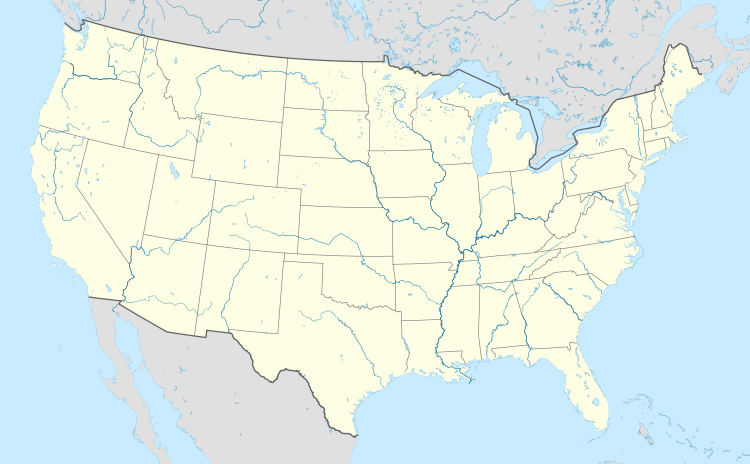High-A

High-A, officially Class High-A, formerly known as Class A-Advanced, and sometimes abbreviated "A+" in writing, is the third-highest level of play in Minor League Baseball in the United States and Canada, below Triple-A and Double-A, and above Single-A. There are 30 teams classified at the High-A level, one for each team in Major League Baseball (MLB), organized into three leagues: the Midwest League, Northwest League, and South Atlantic League.
History
[edit]Class High-A was established as a classification level within Minor League Baseball in 1990 by subdividing the existing Class A.[1] Class A had been the third-highest level in the minor leagues since 1936 (when it was below Double-A and Class A1) and a hierarchy of Triple-A and Double-A above Class A had been in place since 1946.[2]: 15 In 1963, the three classes below Class A (Classes B, C, and D) were abolished, with leagues at those levels moved into Class A.[2]: 15 In 1965, Class A was subdivided for the first time, with the establishment of lower-level Class A Short Season leagues.
The 1965 hierarchy was in place for 25 years, until Class A was further subdivided in 1990, with Class A-Advanced becoming the third-highest classification:
- Triple-A
- Double-A
- Class A-Advanced
- Class A ("Full-Season A")
- Class A Short Season ("Short-Season A")
- Rookie league
Three leagues, each previously Class A, received the Class A-Advanced designation: the California League, Carolina League, and Florida State League.[1] This arrangement continued until 2021, when Major League Baseball (MLB) restructured the minor leagues, eliminating Class A Short Season and discontinuing the use of all historical league names within Minor League Baseball.[3] The existing Class A-Advanced leagues were moved to the Class A level and operated under generic names (Low-A West, Low-A East, and Low-A Southeast) during 2021. The Class A-Advanced level was officially renamed as "Class High-A",[4][5] and also operated three leagues during 2021 with generic names: High-A Central, High-A East, and High-A West.[6] These three High-A leagues had historically been known as the Midwest League, South Atlantic League, and Northwest League—the first two had previously operated at the Class A level, while the latter had previously operated at the Class A Short Season level. Following MLB's acquisition of the rights to the names of the historical minor leagues, MLB announced on March 16, 2022, that the leagues would revert to their prior names, effective with the 2022 season.[7]
In January 2023, it was announced that Veronica Gajownik had been hired to manage the Hillsboro Hops, making her the first woman to manage a High-A team.[8]
Current teams
[edit]Midwest League
[edit]Northwest League
[edit]| Team | Founded | MLB affiliation | City | Stadium | Capacity |
|---|---|---|---|---|---|
| Eugene Emeralds | 1955 | San Francisco Giants | Eugene, Oregon | PK Park | 4,000 |
| Everett AquaSox | 1995 | Seattle Mariners | Everett, Washington | Funko Field | 3,682 |
| Hillsboro Hops | 2013 | Arizona Diamondbacks | Hillsboro, Oregon | Hillsboro Ballpark | 4,500 |
| Spokane Indians | 1898 | Colorado Rockies | Spokane, Washington | Avista Stadium | 6,803 |
| Tri-City Dust Devils | 2001 | Los Angeles Angels | Pasco, Washington | Gesa Stadium | 3,654 |
| Vancouver Canadians | 2000 | Toronto Blue Jays | Vancouver, British Columbia | Nat Bailey Stadium | 6,500 |
South Atlantic League
[edit]
Playoffs
[edit]This section is missing information about pre-2021 playoff structure. (September 2024) |
The format for the 2024 postseason at High-A will consist of four teams per league in a best-of-three division series, followed by a best-of-three championship series. The four playoff participants per league will be the winners of each division from both halves based on the best winning percentage of each half. In the event the same club wins both halves, the club with the next-best winning percentage in the second half will advance.
However, with only six clubs in the Northwest League, the format for the postseason will consist of a single, best-of-five championship series. The two playoff participants will be decided based on the best winning percentage of each half. In the event the same club wins both halves, the club with the next-best winning percentage in the second half will advance.
In the event of any ties, the following tiebreakers will apply in the order below:[9]
- Head-to-head record between the clubs in the respective half (if three or more clubs, best winning percentage in games among the clubs).
- If the clubs remain tied, best overall winning percentage over the last 20 games.
- If the clubs remain tied, best overall winning percentage over an additional game (i.e., the last 21 games, the last 22 games, etc.) until one emerges with a better winning percentage in that span of games.
References
[edit]- ^ a b Cronin, John (2013). "Truth in the Minor League Class Structure: The Case for the Reclassification of the Minors". SABR. Retrieved April 16, 2021.
- ^ a b Johnson, Lloyd; Wolff, Miles, eds. (2007). The Encyclopedia of Minor League Baseball (Third ed.). Baseball America. ISBN 978-1932391176.
- ^ Creamer, Chris (February 15, 2021). "A Breakdown of Minor League Baseball's Total Realignment for 2021". sportslogos.net. Retrieved April 16, 2021.
- ^ The Official Professional Baseball Rules Book (PDF). New York City: Office of the Commissioner of Baseball. 2021. p. 10. Archived from the original (PDF) on November 29, 2020. Retrieved May 1, 2021 – via mlbpa.org.
- ^ The Official Professional Baseball Rules Book (PDF). New York City: Office of the Commissioner of Baseball. 2019. pp. 158–159. Archived from the original (PDF) on July 31, 2019 – via Wayback Machine.
- ^ "Teams by League and Classification". Minor League Baseball. Retrieved November 8, 2020.
- ^ "Historical league names to return in 2022". milb.com. Minor League Baseball. March 16, 2022. Retrieved March 29, 2022.
- ^ "Diamondbacks affiliate Hillsboro names woman as manager". Laredo Morning Times. January 21, 2023.
- ^ "2024 Playoff Procedures". MiLB.com. June 18, 2024.

